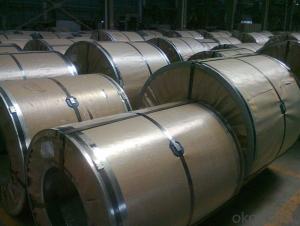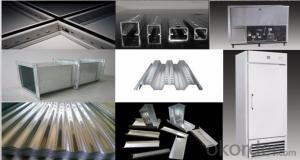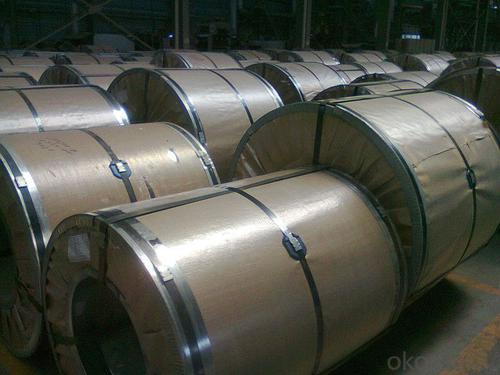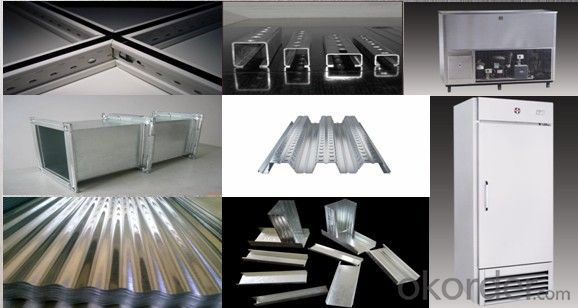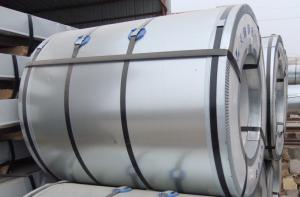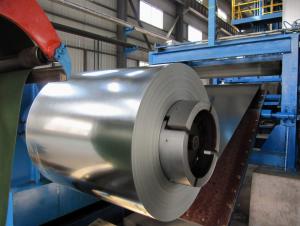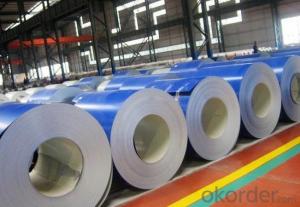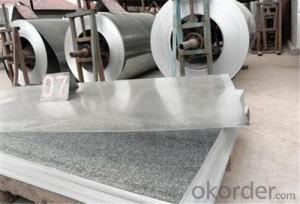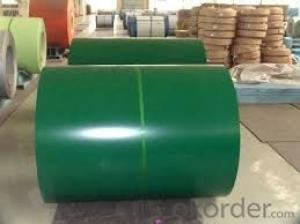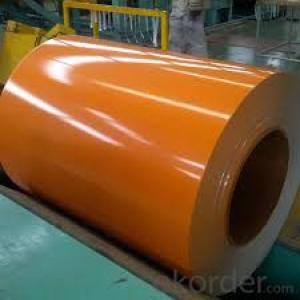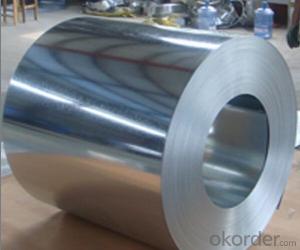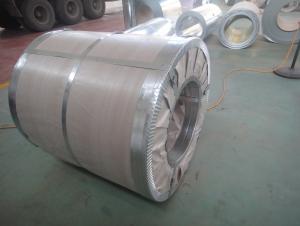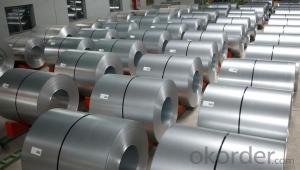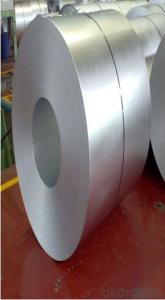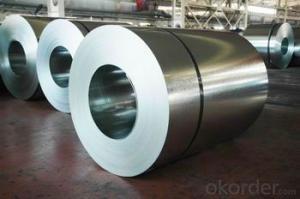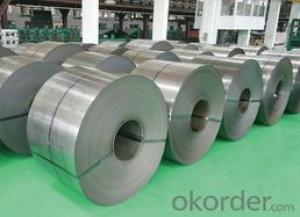Hot Dip Galvanized Steel Sheet in Coil Good Price
- Loading Port:
- Tianjin
- Payment Terms:
- TT OR LC
- Min Order Qty:
- 25 m.t.
- Supply Capability:
- 10000 m.t./month
OKorder Service Pledge
OKorder Financial Service
You Might Also Like
1.Structure of Hot Dip Galvanized Steel Sheet in Coil Good Price Description:
Galvanized steel is steel that has gone through a chemical process to keep it from corroding. The steel gets coated in layers of zinc oxide because this protective metal does not get rusty as easily. The coating also gives the steel a more durable, hard to scratch finish that many people find attractive. For countless outdoor, marine, or industrial applications, galvanized steel is an essential fabrication component.
Hot-dip galvanized steel coils are available with a pure zinc coating through the hot-dip galvanizing process. It offers the economy, strength and formability of steel combined with the corrosion resistance of zinc. The hot-dip process is the process by which steel gets coated in layers of zinc to protect against rust. It is especially useful for countless outdoor and industrial applications. Production of cold formed corrugated sheets and profiles for roofing, cladding, decking, tiles, sandwich walls, rainwater protective systems, air conditioning duct as well as electrical appliances and engineering.
2.Main Features of the Hot Dip Galvanized Steel Sheet in Coil Good Price :
• Excellent process capability
• Smooth and flat surface
• Workability, durability
• Excellent anticorrosive property
• High strength
• Good formability
• Good visual effect
3.Hot Dip Galvanized Steel Sheet in Coil Good Price Images
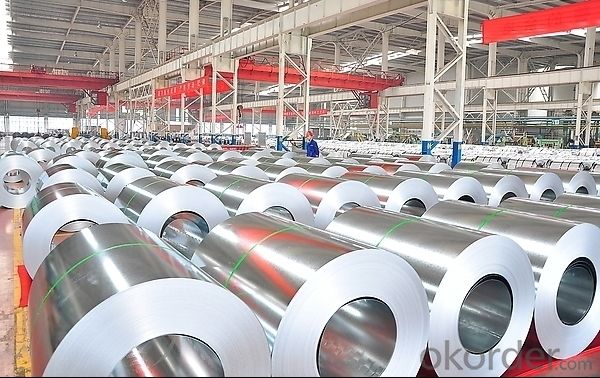
4.Hot Dip Galvanized Steel Sheet in Coil Good Price Specification
Standard: ASTM, JIS,EN
Grade: CS, DX51D+Z,SGCC, SS 230~550,S220GD+Z~S550GD+Z, SGC340~SGC570
Thickness: 0.1mm~5mm
Width: max 2000mm
Coil weight:3-12 MT
Coil ID:508/610mm
Surface structure: zero spangle, regular spangle or minimum spangle
Surface treatment: Chromate treatment, Oiled/dry, skinpassed/non-skinpassed
Packing: Standard seaworthy export package
Technology test results:
Processability | Yield strength | Tensile strength | Elongation % | 180°cold-bending |
Common PV | - | 270-500 | - | d=0,intact,no zinc removal |
Mechanical interlocking JY | - | 270-500 | - | d=0,intact,no zinc removal |
Structure JG | >=240 | >=370 | >=18 | d=0,intact,no zinc removal |
Deep drawn SC | - | 270-380 | >=30 | d=0,intact,no zinc removal |
EDDQ SC | - | 270-380 | >=30 | d=0,intact,no zinc removal |
5.FAQ of Hot Dip Galvanized Steel Sheet in Coil Good Price
We have organized several common questions for our clients,may help you sincerely:
1.How about your company?
A world class manufacturer & supplier of castings forging in carbon steel and alloy steel,is one of the large-scale professional investment casting production bases in China,consisting of both casting foundry forging and machining factory. Annually more than 8000 tons Precision casting and forging parts are exported to markets in Europe,America and Japan. OEM casting and forging service available according to customer’s requirements.
2.How to guarantee the quality of the products?
We have established the international advanced quality management system,every link from raw material to final product we have strict quality test;We resolutely put an end to unqualified products flowing into the market. At the same time, we will provide necessary follow-up service assurance.
3. How long can we receive the product after purchase?
Usually within thirty working days after receiving buyer’s advance payment or LC. We will arrange the factory manufacturing as soon as possible. The cargo readiness usually takes 15-30 days, but the shipment will depend on the vessel situation.
- Q: I just got this aftermarket exhaust on my truck and it's recommended that it be welded, but the metal is aluminized steel. How do I mig weld aluminized steel?
- aluminized steel is just std steel with a coating applied to it to keep it from rusting. It welds just like std mild steel. You need to prep the joint and thats it. Use a wire wheel, brush, sandpaper or what ever to clean the joint of the pipes where you will weld. You don't have to get too crazy here. Just a quick brush/wipe with sand paper over the joint and your ready to weld. For mig welding, I would use a 75/25 gas mix, .023 or .030 solid steel wire, around 50-70 amp setting (on most migs this will be #2 heat setting) and around 3/10th to 4/10th wire speed. (some welders will list 0-10, others 0-100, so figure your scale, like 0-10 it would be 3-4, one that list it by 10's then it would be 30-40)
- Q: What are the common quality control measures for steel coils?
- Some common quality control measures for steel coils include inspection for surface defects such as scratches, dents, or unevenness, checking for dimensional accuracy and thickness consistency, testing for mechanical properties such as tensile strength and hardness, conducting chemical composition analysis, and ensuring proper packaging and labeling of the coils.
- Q: Guitar?I have a steel- string, but prefer nylon.:)
- As people say, nylon strings are (generally) for classical/spanish acoustic guitars - put steel on those and goodbye guitar; the neck will bow and can break.. On other guitars then steel is what you need - if you put nylon on you will have no sustain and tonality. A reasonable guide is the string winding mechanism of the classical guitar. Actually, steel is a pretty much generic term as lots of steel strings are now coated or wound with bronze or phosphor-bronze etc. Strings also come in different gauges or thicknesses depending on what you play. Lighter strings are best for finger-picking and heavier for strumming. Electric guitar strings tend to be strung lighter than acoustic. Finally, a guitar is built for a certain string gauge. If you put strings on that are too light then you may get fret buzz but if you put strings on that are too heavy you could bow the neck of the guitar.
- Q: How much do steel coils weigh?
- The weight of steel coils can vary depending on several factors such as the thickness, width, and length of the coil, as well as the specific type of steel being used. Generally, steel coils can weigh anywhere from a few hundred pounds to several tons. It is important to note that steel coils are typically measured in terms of their weight per unit area, known as the coil's "basis weight" or "coil weight".
- Q: How are steel coils used in the manufacturing of braking systems?
- Steel coils are used in the manufacturing of braking systems to create brake pads and other components that require heat resistance and durability. The steel coils are shaped and processed to form brake pads, which provide friction against the rotor to slow down or stop the vehicle. Additionally, steel coils are also used in the production of brake calipers, rotors, and other parts that ensure efficient and reliable braking performance.
- Q: hello, just wondering if there is such a thing as a stainless steel coating for my aluminum muffler prior to installation. Yes, i suppose you can say that im cutting corners, but my current finances wont allow me to pay full price for a stainless steel one, thnx
- No stainless steel, I'm afraid, but there is an aerosol spray that a lot of welders use . It's a galvanic spray compound to coat weld joints to keep from rusting. It's silver in color, and my add a little 'pop' that it seems you are looking for. Also heat tolerant, and can be re-applied. Most welding supply stores carry this item, and look to pay around $12 a can. Good luck!
- Q: How are steel coils used in the production of shipbuilding components?
- Steel coils are used in the production of shipbuilding components as they provide the raw material required for manufacturing various parts, such as hull plates, bulkheads, and structural members. These coils are processed and shaped to specific dimensions and specifications to meet the design and engineering requirements of the ship.
- Q: How are steel coils used in the production of automotive suspension systems?
- Steel coils are used in the production of automotive suspension systems as they provide the necessary support and flexibility to absorb shocks and vibrations. These coils are typically used in the construction of coil springs, which are then integrated into the suspension system to ensure a smooth and comfortable ride for the vehicle.
- Q: What are the common coil sizes available for steel coils?
- The common coil sizes available for steel coils vary, but some standard sizes include 36 inches, 48 inches, and 60 inches in width, with coil lengths ranging from 1000 feet to 5000 feet. However, it is important to note that coil sizes can be customized according to specific requirements and applications.
- Q: Is it possible that stainless steel watches get rust. Any experience? Thanks.
- Stainless can oxidize over time but it doesn't look much like regular rust. Depending on the exact composition of the stainless alloy in question and what other materials are in contact with it, that's more or less of an issue. In constant contact with skin oils and gentle polishing from contact with skin and clothing, watches rarely rust regardless of what they're made of, I think you have nothing to worry about. Note: for future reference, bleach is absolute hell on stainless. It's bad enough on steel, worse on stainless. Especially because you have this idea that stainless is more or less impervious, when in reality it just isn't.
Send your message to us
Hot Dip Galvanized Steel Sheet in Coil Good Price
- Loading Port:
- Tianjin
- Payment Terms:
- TT OR LC
- Min Order Qty:
- 25 m.t.
- Supply Capability:
- 10000 m.t./month
OKorder Service Pledge
OKorder Financial Service
Similar products
Hot products
Hot Searches
Related keywords
